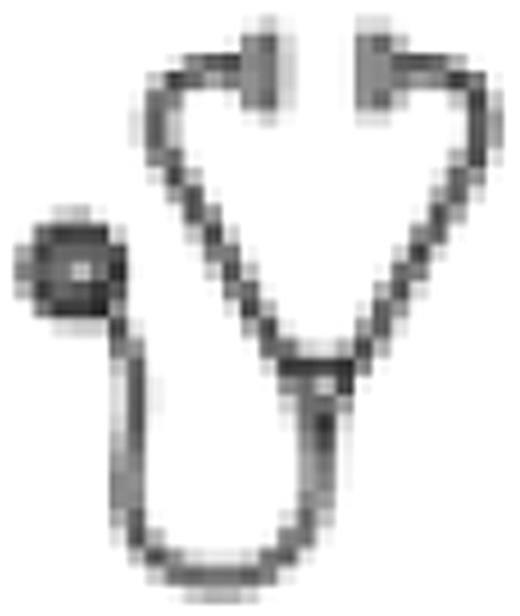Abstract
Abstract 719
Current treatment options for the management of bleeds in hemophilia patients with inhibitors are primarily with bypassing agents, either recombinant activated factor VII (rFVIIa, NovoSeven®) or plasma-derived activated prothrombin complex concentrates. Whilst these products are efficacious, an improvement in the time to hemostasis could lead to better efficacy and improved quality of life. NN1731 was developed with the aim to provide a safe, rapid and sustained resolution of bleeds in patients with hemophilia and inhibitors. NN1731 is a recombinant factor VIIa analog with three point mutations in the protease domain at amino acid positions 158, 296 and 298, thereby stabilizing the active conformation of the molecule (Persson et al. PNAS 2001). It is produced without any human- or animal-derived raw materials. The aim of this phase 2 dose-escalation trial was to evaluate the safety and preliminary efficacy of NN1731 for the treatment of acute joint bleeds in subjects with congenital hemophilia A or B with inhibitors.
This was a prospective, multi-center, randomized, double-blinded, active-controlled, dose-escalation trial evaluating 1–3 doses of NN1731 at 5, 10, 20, 40, and 80 mcg/kg bw vs. 1–3 doses of rFVIIa at 90 mcg/kg bw with a randomization ratio of 4:1 NN1731:rFVIIa for all dose tiers. Enrolled male patients ≥12 years of age experiencing a joint bleed were asked to report to the hemophilia center and were randomized to treatment within 3 hours of onset if the bleed met entry criteria. After first trial product administration (TPA), subjects were assessed at 3-hourly intervals and up to two additional doses of trial product could be given 3 and 6 hours later. Other hemostatic agents could be given as per local standard of care if, according to the investigator, the bleed was not controlled after three doses of trial product. The primary endpoint was number of adverse events, including non-serious adverse events (AEs) occurring within seven days of first TPA, and serious adverse events (SAEs) from first TPA to the end of subjects' participation in the trial. Secondary safety endpoints included evaluation of immunogenicity, biochemistry, hematology, and coagulation parameters. Efficacy endpoints included the number of doses needed to control bleeding, need for additional hemostatic medication, and improvement of symptoms (pain, swelling and range of motion). Furthermore, pharmacokinetic (PK) parameters were evaluated based on FVIIa activity. An independent Data Monitoring Committee (DMC) reviewed all data throughout the trial period, and made assessments after the first 10 bleeding episodes in each dose tier before allowing escalation to the next dose tier.
96 bleeding episodes in 50 patients from 18 countries were dosed. Baseline demographic characteristics of the patients were comparable between NN1731 and the active control group. There were more target joints (defined as three bleeding episodes or more in the same joint in the past six months) treated in the NN1731 groups combined vs. rFVIIa (49% vs. 32%, respectively). Fewer AEs, including SAEs, were reported in the NN1731 groups vs. rFVIIa. AE rates, including SAEs rates, were similar for all dose levels of NN1731 studied, with no safety concerns. No antibody formation was detected in any patient treated with trial product. The PK profile of NN1731 observed in these actively bleeding hemophilia patients confirmed the PK seen in healthy subjects (Moss et al. J Thromb Haemost 2009). Initial analysis of the efficacy results show that 98% of the joint bleeds were controlled with NN1731 in a combined evaluation of 20 to 80 mcg/kg dose groups. The efficacy of rFVIIa was similar to that observed and reported in clinical studies and practice. Remaining data analyses are ongoing at the time of submission but will be completed for presentation at the meeting.
In this largest prospective, randomized, controlled clinical trial of recombinant bypassing agents ever conducted in actively bleeding hemophilia patients with inhibitors, NN1731 was well tolerated, with no safety concerns observed at any dose levels. In particular, no antibodies were detected in any exposed patient. Preliminary results confirm the fast acting pharmacokinetic profile of NN1731 and show a high efficacy rate of NN1731 in controlling acute joint bleeds.
de Paula:Novo Nordisk: Consultancy, Honoraria, Research Funding, Speakers Bureau, Traveling cost to scientific events; Bayer: Honoraria, Speakers Bureau, Traveling cost to scientific events; Baxter: Traveling cost to scientific events; Octapharma: Traveling cost to scientific events. Kavakli:Novo Nordisk: Membership on an entity's Board of Directors or advisory committees, Research Funding. Mahlangu:Novo Nordisk: Honoraria, Membership on an entity's Board of Directors or advisory committees, Research Funding, Speakers Bureau; Bayer: Honoraria, Membership on an entity's Board of Directors or advisory committees, Speakers Bureau; Maxygen: Membership on an entity's Board of Directors or advisory committees. Ayob:Novo Nordisk: Research Funding. Lentz:Novo Nordisk: Consultancy, Research Funding; Celgene: Equity Ownership; Schering-Bayer: Research Funding. Morfini:Novo Nordisk: Honoraria, Research Funding, Speakers Bureau; Bayer: Honoraria, Speakers Bureau; Baxter: Honoraria, Speakers Bureau; CSL Behring: Honoraria, Membership on an entity's Board of Directors or advisory committees, Speakers Bureau; Wyeth: Membership on an entity's Board of Directors or advisory committees. Nemes:Novo Nordisk: Research Funding. Zupancic Salek:Novo Nordisk: Consultancy, Research Funding, Speakers Bureau; Baxter: Consultancy, Speakers Bureau. Shima:Novo Nordisk: Research Funding; Baxter: Research Funding; Bayer: Research Funding. Windyga:Novo Nordisk: Honoraria, Research Funding, Speakers Bureau, Travel to attend scientific meetings. Ehrenforth:Novo Nordisk: Employment. Andersen:Novo Nordisk: Employment. Chuansumrit:Novo Nordisk: Honoraria, Research Funding. behalf of 1804 (ADEPT-1) Investigators:Novo Nordisk: Research Funding.

This icon denotes an abstract that is clinically relevant.
Author notes
Asterisk with author names denotes non-ASH members.

This feature is available to Subscribers Only
Sign In or Create an Account Close Modal